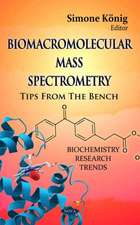Molecular Basis of Specificity in Nucleic Acid-Drug Interactions: Proceedings of the Twenty-Third Jerusalem Symposium on Quantum Chemistry and Biochemistry Held in Jerusalem, Israel, May 14–17, 1990: Jerusalem Symposia, cartea 23
Editat de A. Pullman, Joshua Jortneren Limba Engleză Paperback – 29 oct 2012
Din seria Jerusalem Symposia
- 18%
 Preț: 1231.64 lei
Preț: 1231.64 lei - 15%
 Preț: 656.43 lei
Preț: 656.43 lei - 18%
 Preț: 956.69 lei
Preț: 956.69 lei - 18%
 Preț: 1237.80 lei
Preț: 1237.80 lei - 18%
 Preț: 1236.69 lei
Preț: 1236.69 lei - 18%
 Preț: 1236.51 lei
Preț: 1236.51 lei -
 Preț: 409.89 lei
Preț: 409.89 lei -
 Preț: 406.25 lei
Preț: 406.25 lei - 18%
 Preț: 1225.62 lei
Preț: 1225.62 lei -
 Preț: 396.40 lei
Preț: 396.40 lei -
 Preț: 401.24 lei
Preț: 401.24 lei - 18%
 Preț: 1835.70 lei
Preț: 1835.70 lei -
 Preț: 397.38 lei
Preț: 397.38 lei - 18%
 Preț: 1237.30 lei
Preț: 1237.30 lei - 18%
 Preț: 1831.27 lei
Preț: 1831.27 lei - 18%
 Preț: 1836.63 lei
Preț: 1836.63 lei -
 Preț: 399.29 lei
Preț: 399.29 lei - 18%
 Preț: 1245.22 lei
Preț: 1245.22 lei - 18%
 Preț: 1237.61 lei
Preț: 1237.61 lei - 18%
 Preț: 1836.63 lei
Preț: 1836.63 lei -
 Preț: 394.87 lei
Preț: 394.87 lei
Preț: 406.05 lei
Nou
Puncte Express: 609
Preț estimativ în valută:
77.70€ • 84.66$ • 65.47£
77.70€ • 84.66$ • 65.47£
Carte tipărită la comandă
Livrare economică 23 aprilie-07 mai
Preluare comenzi: 021 569.72.76
Specificații
ISBN-13: 9789401056571
ISBN-10: 9401056579
Pagini: 616
Ilustrații: X, 603 p.
Dimensiuni: 155 x 235 x 32 mm
Greutate: 0.84 kg
Ediția:1990
Editura: SPRINGER NETHERLANDS
Colecția Springer
Seria Jerusalem Symposia
Locul publicării:Dordrecht, Netherlands
ISBN-10: 9401056579
Pagini: 616
Ilustrații: X, 603 p.
Dimensiuni: 155 x 235 x 32 mm
Greutate: 0.84 kg
Ediția:1990
Editura: SPRINGER NETHERLANDS
Colecția Springer
Seria Jerusalem Symposia
Locul publicării:Dordrecht, Netherlands
Public țintă
ResearchCuprins
Mutual Conformational Adaptation of Both Ligand and Receptor in Antitumor Drug-DNA Complexes.- DNA Drug Interactions studied with Polarized Light Spectroscopy : the DAPI Case.- Drug-DNA Recognition : Sequence Specificity of the DNA Minor Groove Binder Berenil.- Binding of Minor Groove Ligands to Short DNA Segments : Berenil Complexed with d(GCAATTGC)2 and d(GCTTAAGC)2.- The Sequence Specificity of Damage Caused by [125I]-Labelled Hoechst 33258 and UV/IodoHoechst 33258 in Intact Cells and in Cloned Sequences of Purified DNA which differ by a Small Number of Base Substitutions.- Structure and Dynamics of a [1:1] Drug-DNA Complex : Analysis of 2D NMR Data Using Molecular Mechanics and Molecular Dynamics Calculations.- Determination of Distamycin-A Binding Modes by NMR.- Molecular Mechanisms of DNA Sequence Recognition by Groove Binding Ligands : Biochemical and Biological Consequences.- Daunomycin Binding to DNA : from the Macroscopic to the Microscopic.- In Vitro Transcription Analysis of the Sequence Specificity of Reversible and Irreversible Complexes of Adriamycin with DNA.- Quantitative Footprinting Analysis of the Actiomycin D-DNA Interaction.- Structural Requirements for DNA Topoisomerase II Inhibition by Anthracyclines.- Thermodynamic Studies of Amsacrine Antitumor Agents with Nucleic Acids.- Kinetic and Equilibrium Binding Studies of a Series of Intercalating Agents that Bind by Threading a Sidechain Through the DNA Helix.- Aminoacyl-Anthraquinones : DNA-Binding and Sequence Specificity.- The Molecular Basis of Specific Recognition Between Echinomycin and DNA.- Bis-Pyrrolecarboxamides Linked to Intercalating Chromophore Oxazolopyridocarbazole (OPC) : Properties Related to the Selective Binding to DNA at Rich Sequences.- Parallel-Stranded Nucleic Acids and their Interaction with Intercalating and Groove Binding Drugs.- Design of Bifunctional Nucleic Acid Ligands.- Sequence-Specific Recognition and CLeavage of Duplex DNA by Derivatized Oligonucleotides.- Bis(Platinum) Complexes. Chemistry, Antitumor Activity and DNA-Binding.- Interaction of Calicheamicin with DNA.- The Effects of Ligand Structure on Binding Mode and Specificity in the Interaction of Unfused Aromatic Cations with DNA.- Modulation of Protein-DNA Interactions by Intercalating and Nonintercalating Agents.- Antitumor Antibiotics Endowed with DNA Sequence Specificity.- Cationic Porphyrin-DNA Complexes : Specificity of Binding Modes.- Complementary Studies on Sequence Specificity in DNA-Antitumor Drugs Interactions.- Uranyl Photofootpring. DNA Structural Changes upon Binding of Mithramycin.- Characteristics of Noncovalent and Covalent Interactions of (+) and (-) Anti-Benzo[a]pyrene Diol Epoxide Stereoisomers of Different Biological Activities with DNA.- Aflatoxin-DNA Binding and the Characterization of Aflatoxin B1-Oligodeoxynucleotide Adducts by 1H NMR Spectroscopy.- Sequence Specific Isotope Effects on the Cleavage of DNA by Radical-Generating Drugs.- Quinolone-DNA Interaction : How a Small Drug Molecule Acquires High DNA Binding Affinity and Specificity.- Mechanisms of DNA Sequence Selective Modifications by Alkylating Agents.- Contrasting Mechanisms for the Sequence Recognition of DNA by(+)- and (-)-CC-1065.- Course of Recognition and Covalent Reactions Between Mitomycin C and DNA : Sequence Selectivity of a Cross-Linking Drug.- Triplex Forming Oligonucleotide Reagents : Rationalization of DNA Site Selectivity and Application in a Pharmaceutical Context.- Experimental Proofs of a Drug’s DNA Specificity.












